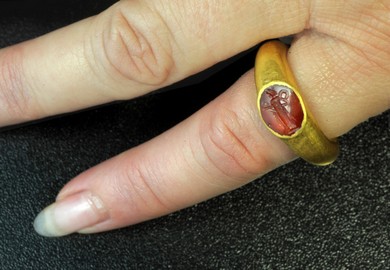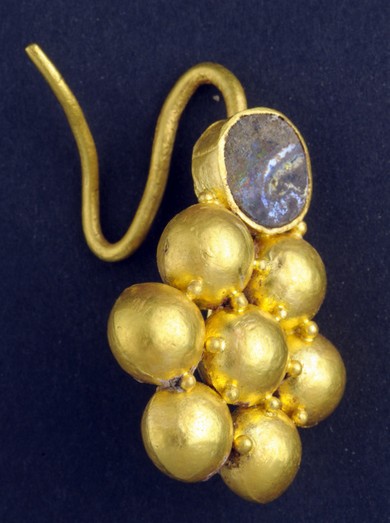jpost.com
Some 140 gold and silver coins and a trove of jewelry were among the treasures uncovered by archaeologists near Kiryat Gat, the Israel Antiquities Authority announced Tuesday.
The jewelry, believed to date back to the Bar Kokhba revolts, was likely hidden by a wealthy woman during the rebellion.
In addition to the coins, the hoard included flower-shaped earrings, a ring with a precious stone marked with the seal of a winged-goddess and two sticks of silver that were likely used for beautification, according to excavation director and archaeologist Emil Aladjem.

"The coins that were discovered date to the reigns of the Roman emperors Nero, Nerva and Trajan who ruled the Roman Empire from 54-117 CE," says Aladjem. "The coins are adorned with the images of the emperors and on their reverse are cultic portrayals of the emperor, symbols of the brotherhood of warriors and mythological gods such as Jupiter seated on a throne or Jupiter grasping a lightning bolt in his hand.”
Sa'ar Ganor, District Archaeologist of Ashkelon and the Western Negev for the Israel Antiquities Authority, says that the collection was probably hidden away for safekeeping, but never reclaimed.
"This is probably an emergency cache that was concealed at the time of impending danger by a wealthy woman who wrapped her jewelry and money in a cloth and hid them deep in the ground prior to or during the Bar Kokhba revolt," says Ganor. "It is now clear that the owner of the hoard never returned to claim it."
The artifacts are being treated at the Israel Antiquities Authority's Artifacts Treatment Department in Jerusalem.

The jewelry, believed to date back to the Bar Kokhba revolts, was likely hidden by a wealthy woman during the rebellion.
In addition to the coins, the hoard included flower-shaped earrings, a ring with a precious stone marked with the seal of a winged-goddess and two sticks of silver that were likely used for beautification, according to excavation director and archaeologist Emil Aladjem.
"The coins that were discovered date to the reigns of the Roman emperors Nero, Nerva and Trajan who ruled the Roman Empire from 54-117 CE," says Aladjem. "The coins are adorned with the images of the emperors and on their reverse are cultic portrayals of the emperor, symbols of the brotherhood of warriors and mythological gods such as Jupiter seated on a throne or Jupiter grasping a lightning bolt in his hand.”
Sa'ar Ganor, District Archaeologist of Ashkelon and the Western Negev for the Israel Antiquities Authority, says that the collection was probably hidden away for safekeeping, but never reclaimed.
"This is probably an emergency cache that was concealed at the time of impending danger by a wealthy woman who wrapped her jewelry and money in a cloth and hid them deep in the ground prior to or during the Bar Kokhba revolt," says Ganor. "It is now clear that the owner of the hoard never returned to claim it."
The artifacts are being treated at the Israel Antiquities Authority's Artifacts Treatment Department in Jerusalem.
No comments:
Post a Comment
Note: Only a member of this blog may post a comment.